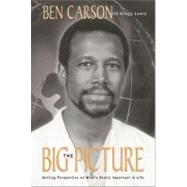
| Contents | |
| PART ONE: SEEING THE BIG PICTURE | |
| Prologue | |
| 1. The South African Twins — Why? | |
| 2. A Set of Twins from Zambia | |
| 3. An Impossible Operation | |
| 4. Getting the Big Picture | |
| 5. Seeing the Big Picture | |
| PART TWO: A CLOSE-UP VIEW OF THE BIG PICTURE | |
| 6. Seeing Hardship as Advantage | |
| 7. Moving Beyond a Victim Mentality | |
| 8. Parenting: Life’s Most Important | |
| Responsibility | |
| 9. Determining Priorities and | |
| Making Choices | |
| 10. Being Nice, Doing Good | |
| PART THREE: THE WIDE-ANGLE VIEW OF THE BIG PICTURE | |
| 11. What Ails America? Racial Diversity | |
| Is a Strength | |
| 12. Finding a Cure For Racial Division | |
| 13. Education: The Great Equalizer | |
| 14. Diagnosing the Crisis in Health Care | |
| 15. Revolutionizing Health Care: One Doctor’s Prescription |
The New copy of this book will include any supplemental materials advertised. Please check the title of the book to determine if it should include any access cards, study guides, lab manuals, CDs, etc.
The Used, Rental and eBook copies of this book are not guaranteed to include any supplemental materials. Typically, only the book itself is included. This is true even if the title states it includes any access cards, study guides, lab manuals, CDs, etc.